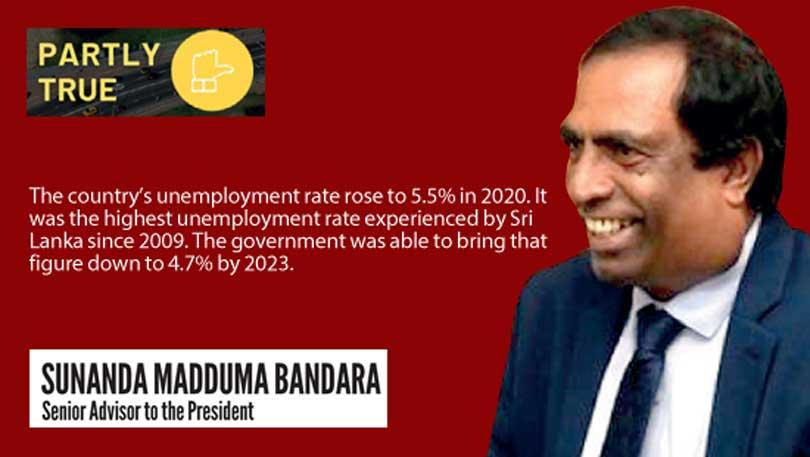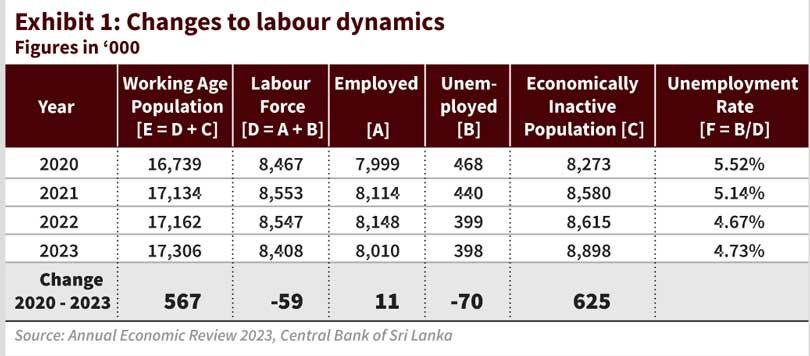31 May 2024 - {{hitsCtrl.values.hits}}

 President’s Advisor Sunanda Madduma Bandara stated that Sri Lanka’s unemployment rate reduced from a high of 5.5% in 2020 (highest since 2009) to 4.7% in 2023—and attributed it to government policy success.
President’s Advisor Sunanda Madduma Bandara stated that Sri Lanka’s unemployment rate reduced from a high of 5.5% in 2020 (highest since 2009) to 4.7% in 2023—and attributed it to government policy success.
To verify the claim, FactCheck.lk consulted the 2023 Annual Economic Review of the Central Bank of Sri Lanka (CBSL).
The stated figures align with the unemployment statistics: 5.5% in 2020 was the highest unemployment rate since 2009, and the reported rate for 2023 was 4.7%. However, unemployment rates can decline due to either positive or negative developments.
To explain, unemployment is measured as the percentage of people who have looked for a job within the previous four weeks and have not found a job. Those who don’t look for work are classified as
“economically inactive”, not as “unemployed”. Therefore, there are two ways that unemployment can decrease: (1) by those seeking employment finding jobs [positive], or (2) by those not employed becoming discouraged and not searching for work in the previous four weeks—that is, becoming economically inactive [negative].
Exhibit 1 shows that the unemployed population decreased by 70,000 from 2020 to 2023. However, in the same period, the employed population increased by only 11,000, and the working age population that was economically inactive increased by 625,000. The situation worsened last year (2022-2023): the unemployed population decreased by just 1,000 and the employed population decreased (not increased) by 138,000. Last year’s figures indicate that not only is the unemployment rate falling due to people becoming economically inactive (instead of finding jobs), but that the total number of people with jobs has also decreased significantly, although the working age population has increased.
Overall, the presidential advisor cites correct unemployment statistics. However, he incorrectly interprets a negative outcome as a positive outcome. The reported rate of unemployment reduced not because of an increase in jobs, but due to people becoming economically inactive (ceasing to look for work).
Therefore, we classify his statement as PARTLY TRUE
*FactCheck.lk’s verdict is based on the most recent information that is publicly accessible. As with every fact check, if new information becomes available, FactCheck.lk will revisit the assessment.

04 Jan 2025 7 hours ago
04 Jan 2025 7 hours ago
04 Jan 2025 8 hours ago
04 Jan 2025 04 Jan 2025
04 Jan 2025 04 Jan 2025